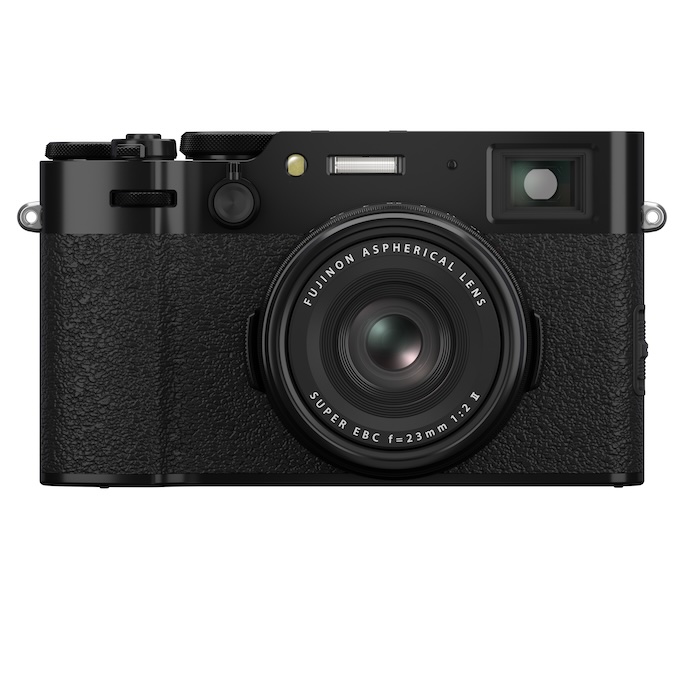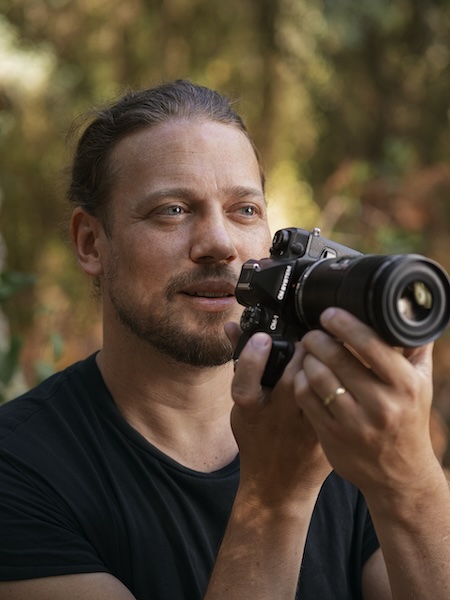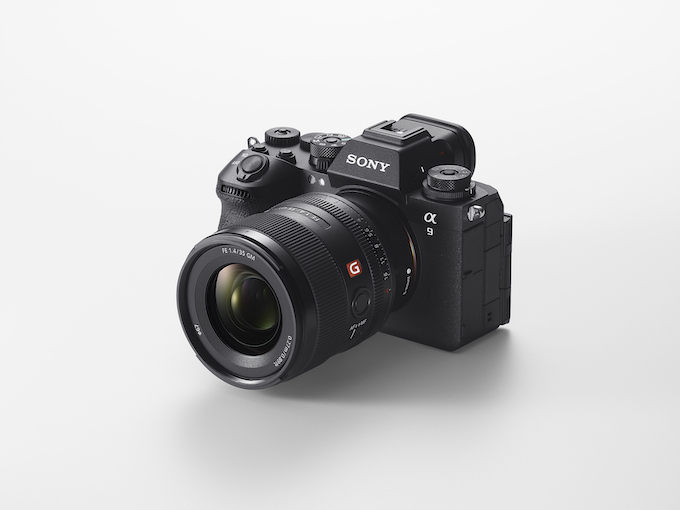Cameras
Canon R6 Mark II Review: The Best Hybrid on the Market
February 1, 2023
When the Canon R6 Mark II was announced late last year and the specs were released, many people in the photography scene online and on YouTube, viewed it as a mid level upgrade. At first glance, it’s easy to see how that could be said, but after you use the camera is when you realize that it is an awesome upgrade to both photo and video, making it the best hybrid camera you can buy currently. In the current times we live in, the separation in quality with resolution, video capabilities, low light performance, and color science is razor thin across all of the professional level cameras on the market. You need something to set yourself apart from the pack to lure buyers in, and Canon did that with this camera, with their improved AF and subject tracking. I will dive into that and my final thoughts on this camera at the end of the review, but first lets talk about what’s new with this camera from its predecessor.
THE CANON R6 MARK II: WHAT’S NEW
- 24.2MP CMOS sensor
- 12fps mechanical shutter (40fps electronic shutter)
- Built-in image stabilization rated to 8.0 stops
- 4K/60p video (oversampled from 6K)
- 6K ProRes RAW video with a compatible Atomos recorder
- Raw burst mode with pre-capture
- Improved Battery Life
- No Time Limit in Recording Video
The Canon R6 Mark II shares the same beautiful 1.62M-dot fully articulating touchscreen and the 3.68M dot electronic viewfinder as the R6. Both versions of the R6 also offer up to 8 stops of stabilization when paired with IS RF lenses. This is a huge benefit when shooting in low light. The grip and weight is virtually identical as well, and both R6 bodies share the same memory card setup with dual UHS II card slots. This is where the similarities stop and we can begin talking about the differences in these two bodies, and ultimately get to the bottom of if you should get the Mark II.

RESOLUTION
Lets begin discussing the differences in these two cameras by starting with their sensors. Both the Canon R6 Mark II and the original R6 use full frame FSI sensors. The difference between the two comes in the form of an additional 4 megapixels in the Mark II and in performance. I will say that after much pixel peeping, I noticed that the Mark II files when zoomed in show slightly more detail than R6 files. For me the resolution is better overall in the Mark II, but only slightly and in most cases its not noticeable. I actually don’t think this is a knock on the Mark II for only just marginal improvements on resolution, rather a badge of honor for the original R6 that it provides amazing image quality. This 24.2-megapixel sensor, while only a slight improvement over its little brother, places itself in the same megapixel range sweet spot as many of its competitors. One thing I do appreciate about the 4-megapixel increase is cropping. As a wedding photographer, there are many situations on a wedding day that require you to act quickly and shoot quickly, thus sometimes not being able to get your best framing or composition. Jumping up from the 20-megapixels R6 to 24 gives me more latitude to crop in if I have to, while also retaining more detail.
[Read: Canon’s EOS R6 Mark II Hybrid Camera Announced]
A big area where the Mark II makes a performance leap, not only over the R6 but the rest of the competition is with how many frames per second it can shoot. With the Mark II you are getting 14 fps mechanically and a whopping 40 fps electronically. In comparison, the Sony a7 IV gets 10 fps both mechanically and electronically, and the Nikon Z6 II gets 14 fps. The 40 fps you get electronically with the R6 Mark II opens the doors to shooting high action and sports. With this camera not having a stacked sensor like the much more expensive R3, you will get some rolling shutter and warping shooting sports with clubs (tennis, baseball, golf, etc), but the 40 fps, combined with a raw file burst mode of 110 images per burst, means you’re going to get some awesome shots out of that if you’re holding down the shutter until the buffer fills up. If you’re covering action or sports where the movement is coming towards you or away from you, the rolling shutter and warping will be minimal if not completely non-existent.
AUTO FOCUS
Auto focus is where the R6 Mark II shines and blows its competitors out of the water, in my opinion. I think AF is the most important factor that comes into play if you’re a professional photographer, especially one that shoots events. When it comes to camera systems I’ve shot them all. I started with Nikon, had a stint with Fuji, switched to Sony, and now I’m with Canon. I’ve had a great amount of experience shooting with all of these systems and I don’t think there is any camera out there, with exception to the R3, that has focusing as good as the R6 Mark II. The R6 Mark II now gives you the option to tell the camera which eye on someone’s face you’d like it to focus on. You can do this both in the menu settings of the camera, or live while you’re shooting, and it will focus on the eyeball closest to you. It will also give you arrows on both sides of the focus square, in case you’d like to switch focus to the other eye, or switch focus to another person in the scene. You can do all these changes almost instantly using the back joy controller on the body. This camera acquires focus almost instantly and always seems to know exactly what my subject is and never leaves them after acquiring focus unless I tell it to. In my real world use of the R6, the R5, the Sony A7 IV and the Nikon Z6 II, none of these can beat the R6 MarkII. I know Sony has been the AF king for a long time, but with the way the Mark II focuses and with the R3, Canon have taken the crown.
Subject tracking has also been improved in this camera from the R6. You can now dive into the menu and change the subject type that the camera tracks, from humans to animals to vehicles. While you can dive into the menu to do this, I hardly think it’s necessary—if you leave it on auto, the camera will analyze the scene and pick out the subject it believes you want to focus on. There must be an emphasis on humans because when they’re in the frame, it will always go to their eyes as opposed to a vehicle thats in the same scene. I’ve left it in auto for all of the weddings and engagements that I’ve shot with this camera and I don’t think it has picked a wrong subject yet. Like I mentioned above in speaking about auto focus, the camera has an uncanny sense of intuitively knowing exactly what I want it to focus on, and that rings true for subject tracking as well.
[Read: 8 Easy Ways Photographers Can Create Engaging Video Content]
VIDEO
I’ll jump right into video with the improvement that was long overdue and that is having no time limit while recording. With the R6 and the R5, you have a 30-minute limit on video before it stops recording. As someone who records long form video, and video/audio for podcasts, that 30-minute limit would always cause me to have to stop production, and restart another 30 minute window. With the Mark II, there is no limit which makes it easy for me to freely record my long term content with no interruptions. Another huge upgrade in the video department is full width 4K 60 fps recording. With the R6, you could record UHD 4k 60 fps, but with a crop. The full width 4K with the R6 Mark II is oversampled from 6K, which produces a beautiful 4k resolution and retains more detail. You can also record 6K with the Mark II if you use an external recorder. If you are someone that loves extreme buttery slow motion, then you will be happy to know that you can get Full HD at a staggering 180 fps. All of these new improvements, paired with 8 stops of IBIS when using IS RF lenses, make this camera a fierce competitor in the video department.

CANON R6 MARK II BODY
I want to touch briefly on the body as there have been changes since the R6. The on/off switch has been moved (to where the ISO dial is) and replaced by a photo to video toggle. At first this was a pain, as my muscle memory with the prior Canon mirrorless button setup constantly had me reaching to turn the camera off in the wrong place. Once I realized the benefits of quickly switching from photo to video with the addition of that toggle, my frustrations died and I became very happy with being able to run-and-gun for both photo and video more easily than I could before. The camera keeps your current photo and video settings locked in when you switch back and forth, so it makes it easy to just hit the switch and keep shooting without having to constantly adjust your settings between photo and video. You also have a new joy controller in the back for selecting focus points while shooting. While this is just a tiny adjustment from the R6, I actually like it a lot; I find that my finger doesn’t slip off it as easily as it did with the original controller on the R6. With this new body, you’re also getting improved battery life. Now I didn’t do any scientific tests to measure amp usage on both bodies, but having shot both the R6 Mark II and the R6 on multiple wedding days, I can tell you that the Mark II feels like it gives you an extra bar of battery life, which is very useful for longer events.
The R6 MARK II: FINAL THOUGHTS
To wrap this review up I have to start by saying that auto focus is king for me when it comes to picking out a camera body to conduct my business with. All professional level camera bodies that compete with the Canon R6 Mark II have sensors that produce beautiful images and have very similar color science. What doesn’t make them equal is things like frame per second and auto focus. I think it is important to remember that at the end of the day, camera bodies and lenses are tools used to get your job done. So when I’m looking to get the best tools to capture an event like a wedding day, that has a lot of moving pieces, time crunches, and robust personalities, I look to grab tools that will do the job for me, but also make my life easier. That’s what I get with the R6 Mark II. It is a hybrid photo/video beast that has the best AF out there, which allows me to focus more on capturing real moments for my couples as they occur instead of wrestling with settings and buttons on my camera.
Scott Stockton is a a Charlotte, North Carolina-based wedding photographer and previous RF 30 Rising star nominee who will do anything to get the best shot for his couples, including getting in streams, lakes, downpours and more!




